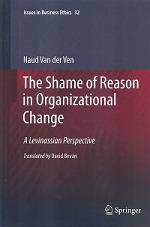At the same time at such moments I have the idea that this ugliness of the built environment is a relatively recent phenomenon. Then I feel that there was a period, say up to about 1800, that everything man made was in harmony with the surroundings, and therefore nice. Whether it concerned buildings, tools, furniture or other artifacts.
Of course ancient shovels could be dilapidated and neglected and there could be smell in the streets and along the water. But that is different from the way plastic or concrete or galvanized steel detonate with the environment. The latter do not fit any longer into the natural environment, a break has occurred. It is true, beautiful effects may result from that, but the break is also the cause of the unimaginable ugliness by which we are surrounded.
Sometimes I fancy to recognize the phenomenon of fit and misfit at the level of a simple brick and the radiance that emanates from it. Actually, I've never seen a pre-nineteenth century brick that was not beautiful in the sense that it detonated with the environment. But after 1800 ugly, flat, industrial bricks come up. Fortunately also beautiful bricks are still being made, but by the increasing use of machines and technology a brick is no longer necessarily beautiful: some species of bricks are just ugly.
However, I do not know if my neat before-and-after-1800 schematism is tenable. In any case, it recently was pierced when I saw a medieval cityscape bearing the image of a port crane. The image was probably 15th century, but I found that crane an ugly structure: awkward and artificial, protrusive and technical. In short, it showed all features of ugliness. So, were cranes ugly already long before 1800? Or have they always been, from the outset?

